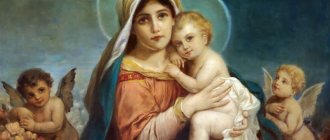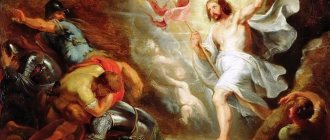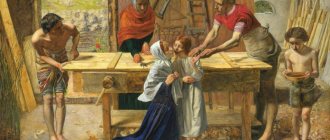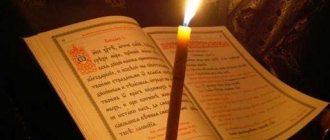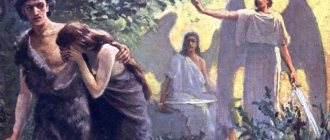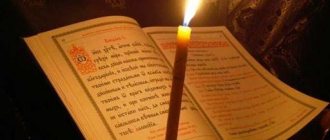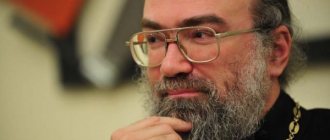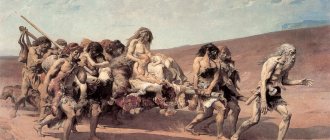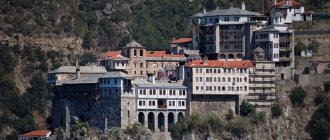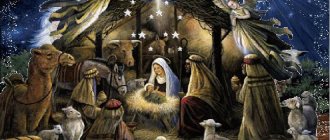In different religions, a special place is occupied by the tombs of revered kings, people, and saints. These sanctuaries were built as homes for the souls of the dead, to which they could return to remember their lives, observe and help their descendants in difficult situations. For Christians, one of the most ancient and highly revered shrines is the tomb of the Virgin Mary, which is located in modern Israel, on the territory of Jerusalem.
Who is the Mother of God
The Mother of God, also known as the Virgin Mary, according to Christian faith, is a saint and virgin who gave birth to Jesus Christ, the son of the Most High God, whose coming the people of the whole world have been awaiting for millennia. Her parents, known as Saint Joachim and Saint Anna, went through many tests prepared by the Lord to test the strength of their faith in God. The couple could not conceive a child for a long time. Such misfortune was also subject to cruel ridicule from society. But the family did not lose faith in God and continued to serve him faithfully. Finally, God gave them a long-awaited daughter, whom Joachim and Anna named Maria. She became the Mother of God.
Messenger of God
As legends tell, one day Archangel Gabriel, the guardian of the divine treasury, descended to earth. God himself entrusted him with an important mission: to talk with the chaste girl Maria, who from childhood grew up surrounded by deeply religious people serving God. During his visit to earth, the Archangel had to ask Mary's permission if she agreed to bear and give birth to a divine child who would save humanity.
The girl at that time was engaged to Joseph, an elderly Christian who certainly believed in God. Joseph, asking for her hand in marriage, promised to treat the girl like a daughter, not touching her integrity, understanding her choice to serve God and supporting her.
When Gabriel began to tell Mary about the divine plan, the girl silently listened to him and courageously accepted the Archangel’s offer, humbly, without fear or doubt, entrusting her fate into the hands of God. Thanks to her upbringing and genetics, embedded in her over generations, she had exceptional purity of thoughts. Raised in a family of saints and brought up according to biblical laws, and from the age of three living in a monastery, Mary did not cloud her mind with pride because of the new status of the Mother of God, she remained a sane, pious, spiritual girl, who, together with her husband Joseph, raised a beautiful son, Jesus - Savior.
Birth of the Son of God
Ancient Jerusalem at that time was under the rule of the Roman Empire, led by Octavian. He proposed organizing a population census. The closest town from Israel where Joseph and Mary could be registered for inclusion in the list was the blessed city of Bethlehem. When the couple finally reached the city, they could not find a single free room in a tavern, hotel or inn. They had to settle down for the night in a barn.
Maria was in her last month of pregnancy. The long journey did its job: the girl went into labor, and baby Jesus was born. Then an angel descended from heaven and announced to people that the son of God had been born, and that he would save humanity from death.
The first to bow to the newborn savior were the shepherds. Following them, wise men from the East, the Magi, appeared and brought their gifts. The wise men found the child by a star that appeared directly above the birthplace of Jesus. They recognized him as a King, God and a mortal man, and presented him with appropriate gifts: gold, incense and myrrh.
Where to stay[edit]
- Pilgrimage houses of the Gornensky Monastery
Pilgrims arriving at the Gornensky Monastery are accommodated in small pilgrimage houses located on the territory of the monastery. Currently, the Gornensky Monastery has 4 pilgrim houses, with a capacity of 10 to 22 people. Settlement in the pilgrimage houses of the Gornensky convent in Jerusalem is carried out through the Pilgrimage Service of the Russian Spiritual Mission.
The pilgrim houses have a kitchen where pilgrims can prepare tea (pilgrims eat in the monastery refectory); shower and toilet are on the floor.
Address:
Israel, Jerusalem, Ein Karem
Directions:
A pilgrim going to the Gornensky Monastery only needs to have a foreign passport and an air ticket for a flight to Ben Gurion Airport. From there, buses, trains and taxis go to Jerusalem; the journey takes about an hour. From the center of Jerusalem (Old City) the monastery in Gorny can be reached by bus routes 19 and 27 (stop “Hadassah Hospital”).
History of the foundation of the tomb of the Virgin Mary
The city in which the tomb of the Virgin Mary was founded, Jerusalem, is the prosperous capital of Israel, rich in culture and glorifying the world's three leading religions: Judaism, Islam and Christianity. Among the people, the capital is called the “city of three religions” for good reason, because there are many architectural monuments and attractions related to these three religions.
On the initiative of Empress Helena, who reigned at the beginning of the 4th century, the Temple of the Assumption was erected over the tomb of Mary's family. It was a small church where people in need came to ask for blessings. It is believed that with the help of appeals to the Mother of God one can reach all ruling and non-ruling celestial beings. If Mary, blessed among women, hears pleas for help and makes a request to God, Jesus, the archangels and other saints, they will certainly ease the suffering of a needy person, heal him, give him a happy and healthy life, and bless his family. Therefore, the temple was known and prayed to by thousands of people.
Unfortunately, the church began to collapse over time. In the 21st century, the building was restored by order of Melisandre, the daughter of the then-ruling Baldwin II. The girl actively took up decorating the temple. Thanks to her faith in the saint and initiative, the shrine seemed to be transformed: artists painted the walls with frescoes, and the tomb of the Blessed Virgin Mary itself became suitable for visits and services. At Melisandre's request, after her death, the girl's body was buried in the tomb of the Virgin Mary.
About earthly life and the place of the Dormition of the Virgin Mary
The content of the article
The Church usually celebrates not the earthly birthday of the Saints of God, but their heavenly birthday—the day of death . The exceptions are the two greatest Saints in the Church: the Most Pure Virgin Mary and St. John the Baptist. We celebrate not only their heavenly, but also their earthly birth. This story is about traditions in the Holy Land, about the cities where, according to Tradition, the Most Holy Theotokos was born.
Holy Righteous Anna was the youngest daughter of the priest Matthan, who came from the tribe of Levi from the clan of Aaron. Her husband, holy righteous Joachim, was from the tribe of Judah, from the house of King David. According to an ancient promise, the Messiah was to come from the line of David. The couple lived in Nazareth of Galilee. Every year they gave two-thirds of their income to the Jerusalem Temple and to the poor. By the special providence of God, the holy couple had no children until their old age. The couple greatly mourned this, since childlessness among the Jews was considered a grave misfortune and punishment from God, and they fervently prayed for 50 years in their life together for the gift of offspring. On one of the holidays, when the Israelites brought gifts to God to the Jerusalem Temple, the high priest, believing that the childless Joachim did not have God’s blessing, refused to accept gifts from him. Saint Joachim was deeply upset. Without returning home, Saint Joachim went into the desert and spent forty days there in strict fasting and prayer, calling upon himself the mercy of God and washing away his dishonor with bitter tears. In the Kelt Gorge (Wadi Kelt) in the Judean Desert, on a narrow ledge in a completely sheer rock, 5 km west of Jericho, the monastery of St. George the Chozebit (St. George), founded in the 80s of the 5th century, perched.
In this monastery there is one of the shrines - the cave of the prophet Elijah, now the Church of St. Elijah the Thesbite. This church is a chapel, but with a throne for the liturgy, located in a rock cave. Here, according to legend, the future Godfather Joachim prayed and complained to the Lord about his infertility and received news from an Angel about the imminent birth of a girl from his wife Anna, who in turn was to become the Mother of God. Tradition says that Anna herself lived here as a hermit for the rest of her life after she took her three-year-old daughter Mary to the Temple, and at one time the foot of St. Anna, subsequently taken to Athos, where it formed the basis of the new monastic monastery of St. Anna.
The paintings on the walls of the cave depict: St. Joachim and Anna, Sts. John and George the Chosebites, Nativity.
With the gospel, an Angel appeared to Saint Anne in Jerusalem, who was desperately praying for the happiness of motherhood, and appeared to Saint Joachim in the desert and commanded him to go to Jerusalem. In Jerusalem, holy righteous Anna conceived the Blessed Child and gave birth to the Blessed Virgin Mary.
In the Orthodox Church of the Nativity of the Virgin Mary in Jerusalem there are several icons dedicated to the meeting of Sts. Right Joachim and Anna (Conception of Anna):
Temple icon and fragment of the Royal Gate in the Church of the Nativity of the Virgin Mary in Jerusalem
Saved Shrine This wooden icon of Russian writing, very revered by pilgrims, clearly knew and saw the hard times of Jerusalem.
Until the age of three, the Most Holy Mary lived in the house of her parents, and then she was solemnly brought by Saints Joachim and Anna to the Temple of the Lord, where she was raised until she came of age. (after all, the couple made a Vow to dedicate their daughter to God) Soon after the introduction of the Most Holy Theotokos into the temple, the eighty-year-old elder Joachim died. Saint Anna survived him by two years and departed to the Lord at the age of seventy-nine.
Three cities in the Holy Land dispute the honor of being the birthplace of the Virgin Mary.
These are Nazareth, Zippori (Siphoris, Sepphoris) and Jerusalem. About Nazareth and Zippori - a little later. According to Tradition, it is also believed that the parents of St. Anna had a large house in Jerusalem, so it is logical to assume that St. The righteous Joachim and Anna also had a house in Jerusalem, where they stayed during all religious Jewish holidays, when a visit to the Jerusalem Temple was obligatory.
At the very beginning of Via Dolorosa, at the Lion Gate, in the entrance of a residential building, there is a modest Orthodox Church of the Nativity of the Virgin Mary, belonging to the Jerusalem Patriarchate.
There is a tiny church inside the building. Divine services are rarely held here. In the church there are a lot of ancient icons of Russian writing, witnesses of the love of our compatriots for these holy places. Church of the Nativity of the Virgin Mary of the Jerusalem Patriarchate in Jerusalem
There are two caves under the church. They, according to many researchers, were the home of St. Joachim and Anna. In the Byzantine crypt under the church there is an upper room, where a mosaic Greek cross on the ancient Byzantine floor marks the place of the glorious Nativity. There are also many icons of Russian and Greek writing here.
Icon of the Nativity of the Virgin Mary in the crypt of the Church of the Nativity of the Virgin Mary in Jerusalem
Not long ago, excavations under this house continued and an even more ancient Byzantine church-crypt was discovered in a cave dating back to the Second Temple. — Descent into the house-cave of the Righteous Joachim and Anna Altar of the oldest Byzantine crypt in the Church of the Nativity of the Virgin Mary in Jerusalem
It is believed that the Blessed Virgin Mary spent her first childhood years here. For centuries, people have been bringing fresh flowers to a shelf in the form of a depression in the rock where, according to legend, the cradle of the little Virgin Mary stood. It was here that Maria took her first steps. Slab-shelf-recess where, according to Tradition, the cradle of the little Mother of God stood
The other part of the territory that belonged to Joachim and Anna now belongs to the Catholics. Here, on the site of the proposed house, stands the majestic building of the Catholic Church of St. Anne. On the site of their house, St. Queen Helena built a temple that was destroyed at the same time as others
Repeatedly restored by Christians after various devastations, by the time of the Crusaders it was a small, poor monastery. The modern church building was erected in 1142 with the support of Queen Melisande, who did a lot for pilgrims in the Holy Land. By the way, in gratitude for her earthly deeds, Queen Melisande was buried in the Church of the Assumption of the Blessed Virgin Mary in Gethsemane (Jerusalem) in the chapel in honor of Sts. Joachim and Anna. Tombs of Sts. Joachim and Anna.
Icons at the site of the Tomb of Sts. Joachim and Anna.
Entering the church courtyard, it is difficult to imagine that we will encounter such a well-preserved building from the Crusader period.
— In the photograph you can see the entrance from Via Dolorosa to the building of the Catholic monastery of St. Anne (mother of the Virgin Mary), founded during the Crusaders on the site of the supposed birth of the Holy Virgin, as well as the Church of St. Anne, built by the Crusaders, and the interior of the church with the famous vaults Crusaders inside. The acoustics here are amazing - you can hear the whisper of a person standing at the altar at the entrance!
At the entrance to the church, everyone is greeted by a wonderful sculpture of Mother and Daughter talking - Righteous Anna and the young Virgin Mary
From the basilica you can go down the stairs into the underground crypt, in which tradition has determined the place marked by the altar where the Virgin Mary was born.
— Here you can also see only part of the wall of the house of the parents of the Blessed Virgin Mary. Over the centuries of reconstruction, only a small part of the vaults has been preserved. This place is also revered by Orthodox pilgrims; there is also a small chapel with a Russian Orthodox icon of the Nativity of the Virgin Mary, because only at the beginning of the 20th century did the Greeks begin to build their consulate building on Via Dolorosa and, with the help of Russia, created a modest Church of the Nativity on the ground floor The Virgin Mary, which was described above: Altar at the site of the Nativity of the Virgin Mary in the Church of St. Anne in Bethesda
Icon "Nativity of the Virgin Mary" in the Church of St. Anne in Bethesda
— This is one of the most interesting icon-interpretations of the Nativity of the Virgin Mary - this is how the Nativity of Jesus Christ is usually depicted. But here the scene of the baptism of Mary and the Annunciation of St. are also added. right Joachim, which is rare... The website Orthodox Fasts and Holidays provides a detailed and accessible account of the iconography of this Holiday. The stable and widespread iconography of the holiday indirectly indicates that already in the pre-iconoclast period there were icons of the Feast of the Nativity of the Virgin Mary in the Church. When comparing the icon of the Nativity of the Mother of God with other icons of the twelve feasts, the more earthly, human structure of this image attracts attention. The icon is not a simple transfer of the dogmatic content of the holiday, but has very intimate features, it is not devoid of everyday details. The icon of the Nativity of the Mother of God, as it were, introduces Joachim and Anna into the family, making us partakers of an extremely joyful event that sanctified Joachim’s house and the entire universe. Many years of aspirations came true, the couple had a long-awaited baby, and the parents probably understood and felt that this child was extraordinary, since God himself, through the angels, informed them about the birth of the child. During the conquest of Jerusalem, Muslims converted the upper church in the name of St. Anna to the mosque, and the monastery to school. ..
In the 15th century, this school was abolished due to the increasing incidence of widespread illness among students. For the same reason, the Muslims abandoned the entire quarter, which had been abandoned for a long time, and the monastery buildings were finally destroyed by the earthquake of 1834. Behind the unremarkable facade of the monastery building, in the courtyard next to the church, there is a real archaeological reserve. The remains of a reservoir have been excavated here - the so-called “Sheep Pool” (Bethesda). During the Second Temple, the Levites washed sacrificed sheep here, and during the time of Christ they healed the sick here. The English artist David Roberts visited the Holy Land and Egypt in 1838. He became famous as a master of depicting architectural monuments. The exhibition of watercolors and drawings he made during his travels evoked warm praise, noting the perfection of his technique and, as we would say today, photographic accuracy. The publication brought Roberts European fame. Egypt, Syria and Holy Land was published monthly from 1842 to 1849 and made Roberts the most famous artist of the Victorian era. He was received at court and received praise from many great artists and writers from Turner to Dickens and Thackeray. With the end of the Victorian era, it seemed that the name of David Roberts, like many artists of that time, would be forgotten. But even today his paintings make a great impression, and his drawings have preserved the charm of that lost world, in which travel to the Middle East was a dangerous adventure, and the temples of the Valley of the Kings or the Church of the Holy Sepulcher became known to the public only thanks to the artist’s art. Lithograph by David Roberts "Pools of Bethesda"
This is what the territory of the site looked like in 1838, transferred by the Turkish Sultan after the end of the Crimean War to Napoleon III in gratitude for his support in the war. Napoleon III handed over this abandoned site to the monastic order of the White Fathers, who scrupulously and carefully carried out excavations and ancient Bethesda appeared before their eyes.
In the Gospel of John (5:1-9): “After this there was a feast of the Jews, and Jesus came to Jerusalem. There is also a pool in Jerusalem at the Sheep Gate, called Bethesda in Hebrew, which had five covered passages. In them lay a great multitude of the sick, the blind, the lame, the withered, waiting for the movement of the water. For the Angel of the Lord from time to time went into the pool and troubled the water; and whoever first entered it when the water was stirred recovered, no matter what disease he was possessed by. Here was a man who had been ill for thirty-eight years. Jesus saw him lying and learned that he had been lying there for a long time, and said to him: Do you want to be healthy? The sick man answered Him: Yes, Lord; but I have no one to lower me into the pool when the waters are troubled; when I arrive, another has already descended before me. Jesus said to him: Get up, take up your bed and walk. And he immediately recovered and took up his bed and walked.” It was here, in the pool at the Sheep Gate, according to John's account, that Jesus healed the paralytic.
There has long been a reservoir in this lowland. The dam collected the water flowing through the valley into a natural lake. It was converted into an artificial reservoir measuring 40 x 50 m and 6 m deep. Water from the reservoir was brought to the Temple through an open canal and was used to wash sacrificial animals.
The fact that these ponds are filled with completely healing water can be found in the prophecy of Ezekiel (47:1-9): “And he brought me back to the entrance of the house, and behold, water flowed out from under the threshold of the house, towards the east, because the house faces east, and the water flows from under the right side of the house to the south side of the altar. And he brought me out through the north gate and led me along the outer road to the outer gate, the road leading towards the east, and behold, water flowed out on the right side. <…> Popular rumor ascribes healing properties to them - why? Because there are restrictions on climbing to the Temple for cripples, but everyone wants to climb... Well, hope for healing - here it is, in the Sheep Pond! The artifacts found by the monks during excavations, washed and carefully displayed in the archaeological garden in the monastery courtyard of the Church of St. Anne in Jerusalem.
Archaeological excavations have been carried out on the territory of the monastery since 1914. When the Crusaders came to the Holy Land, little remained in this place.. The Byzantines built on such a scale that when the Crusaders tried to restore their destroyed creations, with all their diligence, they did only half and smaller size, although this looks impressive to us now!
— The photograph shows a diagram of the Church of the Crusaders “Bethesda” with a descent into the underground crypt-bath and a modern view of the remains of this church on the territory of the Catholic monastery. Here, according to legend, the Miracle of the Healing of the Paralytic took place - the Crusader Font-crypt, located deep underground, lined with huge stone monoliths. You can go down to it along rough stone steps and see the arches of ancient vaults. In addition to this church, built over the place where the paralytic was healed, the crusaders built the large Church of the Nativity of the Virgin Mary, which was already discussed above.
In Galilee, not far from Nazareth, is the city of Zippori. Now it is a small settlement, but with a very long history. Tzipori was first mentioned during the time of Alexander Jannaeus in 103 BC. e. Josephus in Antiquities of the Jews, but there are archaeological finds indicating the existence of the city as early as the First Temple period. From 55 BC e. the city becomes the capital of Galilee. In those days, in accordance with Christian tradition, the parents of the Virgin Mary, St., lived here. Righteous Joachim and Anna. On the site of the house in which, according to tradition, the parents of the Virgin Mary lived, churches were built by both the Byzantines and the Crusaders. In the 5th century, this city was the place where a bishop lived, who participated in the Ecumenical Council of Chalcedon in 451. The Byzantine church in 330 was built on the initiative of Joseph, a baptized Jew, and was dedicated to the parents of the Virgin Mary. The Crusaders built their church in the same place, and it was from here, from Zippori, that the army of the Crusaders moved to the site of their terrible defeat in 1189, after which they gradually surrendered all their positions in the Holy Land... - At the entrance to the Franciscan convent of St. Anna in Zippori everyone is greeted by the sculpture of Righteous Anna and the Virgin Mary.
The amazing similarity of this church of St. Joachim and Anna and the Church of St. Anna in Jerusalem. Church of St. Joachim and Anna in Zippori
— From the Church of the Crusaders, only the eastern part remains, in which three apses stand out. The central apse amazes with the beauty of its arched vault. In 1879, the Franciscans rebuilt part of the side apse of the church and use it for worship. — The photo shows the place of worship in the Church of St. Joachim and Anna in Zippori. The altar is installed in the chancel of the Crusader church, decorated with preserved Byzantine mosaics. The altar is decorated with a painting of Righteous Anna and the Virgin Mary.
Near the church, the convent of St. Anne and a Christian school for girls grew up. The holiness of this place for Christians is described in the testimonies of pilgrims. One of them, who visited Zippori in 560, describes his participation in a ceremony associated with a bucket and basket with which the Virgin Mary played as a child. And in July 1985, the 2000th anniversary of Mary’s birth was widely celebrated here. As noted, services are held here, but there are no attempts to restore the church completely... - but even so the place there is amazing and absolutely deserted. Only those who know about this monastery knock and are warmly received by one of the several nuns living in the monastery...
three cities in the Holy Land dispute the honor of being the birthplace of the Virgin Mary. These are Nazareth, Zippori (Siphoris, Sepphoris) and Jerusalem. The Annunciation of the Virgin Mary took place in Nazareth, however, there are discrepancies in Christian Traditions and traditions as to whether the Angel found the Blessed Virgin in the house or at the well, whether that house was the dwelling of her parents, St. Right Joachim and Anna or Joseph the Betrothed. Therefore, some associate the place of the Annunciation of the Virgin Mary with the place of the Nativity of the Virgin Mary. Now Nazareth is one of the three most sacred cities for Christianity, along with Bethlehem and Jerusalem. Muslim sentiment towards Christians was never stable, and the shrines of Nazareth were periodically attacked and desecrated. In 1620, Father Tomaso Obisini received from the Sidonian Emir Fakhr ed-Din, who also ruled the whole of Galilee, the right to take charge of Nazareth, rebuild the sanctuary and build a monastery for the Franciscans. In 1955, it was decided to completely demolish the old church and fully explore the territory underneath it, after which to build a worthy new building here. , Crusaders. Here we see foundations, walls, remains of a mosaic floor in different places. The oldest part of the church and its main shrine is the grotto. According to legend, this was the home of the Holy Family.
There is no doubt that a Jewish family once lived here, but over the centuries, this dwelling has undergone so many small changes introduced by the next Christian community, which for a certain time “registered” in it, that little remains of its original appearance as a dwelling. . It was then expanded, then deepened, then lined with bricks, then destroyed again, given the shape of a church apse, altars were installed, the ceiling was supported by columns, and then these columns were sawed by the Saracens in search of treasure. Nevertheless, some remains have been preserved, indicating that before all religious buildings there was an ordinary dwelling of a simple Jewish family on this site. On the lower floor of the Basilica of the Annunciation, an open crypt is visible below. The altar was taken from the previous church. According to tradition, the marble circle with a cross signifies the place where Mary stood during the angelic annunciation. Under the altar, on a marble shield, there is an inscription engraved in Latin: “VERBUM CARO HIC FACTUM EST” - “Here the Word became flesh.” Where Gabriel stood there is a marble column, its middle cut out. According to legend, the pagans cut it down, thinking they would find treasure in it, but for their insolence they were struck blind. It is impossible to enter the cave itself after all the reconstruction of the church... In 1960, during new construction, foundations, columns, double arches and mosaics of a clearly pre-Byzantine type were discovered. Archaeologists have concluded that these are the remains of a synagogue-type Judeo-Christian church. The Byzantines used parts from the previous church to build their new one. Even the name of one of the presbyters of the ancient community has been preserved, written in the mosaic floor, where you can read: “ΣΟΝΩΝΩΚ ΝΟΚΑΙΔ ΝΩΜΥΛΟΣΟΡΕΙ” (Konon, Deacon of Jerusalem). This is most likely the same martyr Konon, a direct descendant of the relatives of Jesus, executed in Panfilia in 249. Here the Word became flesh
Upper Church in the Basilica of the Annunciation in Nazareth
In the upper church in the Basilica of the Annunciation in Nazareth, on the eastern wall there is a monumental mosaic panel “Triumph of the Universal Church” by Salvator Fiume from Cosimo (Sicily), this is a gift from Italy. In the center, Christ is depicted in the red vestment of the high priest, He stands in Zion and with outstretched arms invites all humanity to Himself. Above Jesus is depicted the soaring dove of the Holy Spirit in a red cloud and the all-seeing eye of God the Father. Rising above Mount Zion stands the Indestructible Rock on which Christ builds His Church. At the right hand of Christ, as if at handicraft, sits Mary. Peter, standing next to Christ, on the left, with his gloomy gaze expresses the burden of responsibility for the entire Church on earth, and behind Peter (on the right) are the rest of the apostles. An endless stream of pilgrims from all countries flocks to the Holy Mountain from everywhere. They all come to Christ in response to His call. Above, the words of the Nicene-Constantinopolitan Creed: “CREDO UNAM SANCTAM CATHOLICAM APOSTOLICAM ECCLESIA” - “I believe in one, holy, catholic and apostolic Church.” All sculptures, icons, paintings, mosaics, altar utensils were presented as gifts from most world states and are housed in the Upper Church of the Basilica of the Annunciation.
There are two Traditions about the place of the Annunciation to the Virgin Mary. One of them talks about the betrothal of Mary and Joseph, but the ceremony of entry into her husband’s house has not yet been celebrated, and Mary lives with her mother in her parents’ house and prepares a dowry for herself... And one day, when she was sitting at work, the Archangel Gabriel appeared before her... In parallel With this tradition, another tradition was spread, according to which the Annunciation took place in the house of Joseph. On the territory of the Franciscan monastery, where the Basilica of the Annunciation is located, there is also a small church of St. Joseph the Betrothed, whose crypt is of a cave type, and which some consider the home of the righteous “Jesus in Joseph’s workshop”
Painting in the Church of St. Joseph the Betrothed in Nazareth. In the same church you can also see painted wooden sculptures of the Holy Family:
In the photo there are sculptures located near the Church of St. Joseph the Betrothed in Nazareth. One of them, the sculpture of the Holy Family, is installed at the entrance to the Church of St. Joseph the Betrothed. On the territory of the Franciscan monastery, where the Basilica of the Annunciation is located, this sculpture of the Virgin Mary was also found, now installed near the Church of St. Joseph the Betrothed, as if inviting her to come into her House...
rare icon - St. Mary, grandmother of the Most Holy. Theotokos and Mother of St. Righteous Anna (located in a small small Greek monastery of the Jerusalem Patriarchate, in the monastery of Little Panagia or “Sednaya” (“Saidnaya”)
In Jerusalem, in the Old City, there are a lot of small monasteries located in courtyards. Sometimes one or two nuns live there, sometimes there is a visiting priest, and the Divine Liturgy is served on the patronal feast day. Most often, there is no one there, and getting there is very problematic, although sometimes residents of adjacent apartments have keys to these small temples. On the border of the Muslim and Christian quarters of the Old City, there is a small monastery in the courtyard.
The monastery of Little Panagia, Sretensky or Saidanaya is so called from the icon of the Mother of God
This icon, the Sednai Mother of God, painted by the hand of Apostle Luke, according to Tradition, supposedly came to the Holy City from the Damascus convent of Saidanai and, taken back there, miraculously appeared again in this monastery, where it remains to this day.
Later, this icon was stolen from the church, but just as miraculously disappeared from the thief and appeared again in the church in its usual place; the kidnapper fell into relaxation and, having repented, received healing through the prayers of the Mother of God and, as a sign of gratitude, decorated the miraculous icon with a silver robe. Now she stands in a special niche behind a wire grill in the chapel of All Saints; The icon is small, has a folding shape: on the middle board there is a depiction of the Mother of God holding the eternal Child on her lap. Icon of the Most Holy Theotokos “Sednaya” (“Saydnaya”, “Seydnaya”)
Main altar in the name of Simeon the God-Receiver and Anna the Prophetess: Iconostasis in the Sednaya monastery in Jerusalem
The monastery is small, well-groomed. Besides everything, Tradition says that the house of St. Anna’s parents was located here. We know nothing from their lives, except that the mother of St. Righteous Anna was such a pious woman that it was in her honor that St. Righteous Joachim and Anna are their Child.
Holy Righteous Mary - grandmother of the Blessed Virgin Mary:
It is very difficult to find information about this monastery and these icons. The Greek nuns who were in the monastery that day did not know much about the history of the icons, except for their names, and their English was not up to par. It was possible to find only a small description of the monastery from Archimadrite Leonid (Kavelin) “Old Jerusalem and its environs. From the notes of a monk-pilgrim,” and from mashenka-senсh, a Web user.
Dormition of the Mother of God. Gethsemane Cave Standing at the cross of Jesus were His Mother and His Mother’s sister, Mary of Cleophas, and Mary Magdalene. Jesus, seeing His Mother and the disciple standing there, whom He loved, said to His Mother: Woman! Behold, Your son. Then he says to the disciple: Behold, your Mother! And from that time on, this disciple took Her to himself. (John 19:25-27)
In the Chapel of the Mortal Annunciation
This is the place where the Most Pure Mother of God prayed after the Ascension of the Son and where the Archangel Gabriel, with a paradise branch in his hands, announced to Her about the upcoming Assumption. Monastery "Little Galilee" Viri Galileae (Men of Galilee)
Church of the Assumption of the Virgin Mary in Gethsemane (Jerusalem). Celebration of the Dormition of the Blessed Virgin Mary by the Orthodox Church on August 28, 2008. This is the entrance, the temple itself is almost 50 steps lower. But the descent into the temple is also a temple with two chapels. In unequal parts, the Church of the Assumption of the Blessed Virgin Mary belongs to four Christian denominations - Orthodox Greeks, Armenians, Syrians and Copts. There are altars of these denominations and the times of services are scheduled.
Celebration of the Dormition of the Blessed Virgin Mary by the Orthodox Church on August 28, 2008. in the Church of the Assumption of the Virgin Mary in Gethsemane (Jerusalem). This is the entrance to the underground church, where the Tomb of the Blessed Virgin Mary is located.
The Temple is usually very gloomy, and only on this day hundreds of lamps and candles are lit.
Entrance to the Tomb of the Mother of God (Gethsemane, Jerusalem) Entrance to the Tomb of the Blessed Virgin Mary below between the icons of the “Last Supper” and the icon of the Mother of God with a list - The image is similar in iconography to: BOGOLYUBSKAYA ICON OF THE MOTHER OF GOD - an icon painted in the 12th century. according to the command and vision of Andrei Bogolyubsky. Depicts the Virgin Mary in full-length, with a scroll in her hands in prayer before the Lord. Icon of the Dormition of the Virgin Mary above the entrance to her Tomb in the Orthodox Church of the Dormition of the Blessed Virgin Mary in Gethsemane (Jerusalem). Russian pilgrims donated it to the temple.
Patriarch Theophilus of Jerusalem blesses the faithful before entering the Tomb of the Blessed Virgin Mary on the day of the celebration of her Dormition in the Orthodox Church of the Dormition of the Virgin Mary in Gethsemane
Stone bed of the Tomb of the Blessed Virgin Mary in the Orthodox Church of the Dormition of the Virgin Mary in Gethsemane
Icons in the Tomb of the Blessed Virgin Mary in the Orthodox Church of the Dormition of the Virgin Mary in Gethsemane (Jerusalem), located on a stone slab on top of the stone bed of the burial cave.
The tomb of the Blessed Virgin Mary ends at the top with a dome with a hole in the middle for smoke from candles and lamps.
The miraculous icon of the Mother of God of Jerusalem of Russian writing in a stone icon case in the Orthodox Church of the Dormition of the Virgin Mary in Gethsemane (Jerusalem). It was painted relatively recently (100-120 years ago) by a Russian nun-icon painter of one of the monasteries of Jerusalem, to whom the Blessed Virgin appeared and commanded her to paint Her image. The image was painted and the Mother of God is depicted on it as she appeared in the vision. The monumental stone icon case is a donation from the Cypriot abbot Joachim.
Staircase in the Temple of the Dormition of the Virgin Mary According to a long-standing tradition, the staircase is decorated with candles on the day of the celebration of her Dormition in the Orthodox Church of the Dormition of the Virgin Mary in Gethsemane (Jerusalem).
The Shroud of the Virgin is a double-sided icon in a silver frame - a gift from Countess A.A. Orlova-Chesmenskaya, a work of Russian-Byzantine church art of the 19th century.
Three days before the Assumption, a procession of the Cross takes place from Little Gethsemane through the entire Old City of Jerusalem to the Tomb of the Blessed Virgin Mary. This tradition came to us from Tradition that three days before the blessed death of the Blessed Virgin, the Holy Archangel Gabriel announced this. The heavenly messenger handed Her a paradise palm branch, which during the funeral procession was carried by the holy Apostle John the Theologian in front of the tomb of the Most Holy Theotokos. All the apostles were miraculously gathered by the power of God to the bed of the Blessed Virgin. Having received the last earthly blessing and said goodbye to Her, they fulfilled their will to bury Her in Gethsemane at the tomb of the parents of Saints Joachim and Anna. In memory of these events, a custom has been established in Jerusalem since ancient times to repeat this procession with the Shroud of the Virgin Mary, which is a double-sided icon in a silver frame. All year it is kept in the courtyard of Gethsemane, the so-called Little Gethsemane, directly opposite the Church of the Holy Sepulchre. The Shroud is placed in a special place behind Her Tomb and believers venerate it, passing under it on their knees.
In the Church of the Assumption of the Blessed Virgin Mary in Gethsemane (Jerusalem), not reaching the top of 10 steps, chapels in honor of Sts. are built to the right and left. Joachim and Anna are right. Joseph the Betrothed. This is the tomb of the parents of the Blessed Virgin Mary, Sts. Joachim and Anna. The Greek Orthodox throne is also located here, as well as the tomb of Queen Melisande.
The aisle is right. Joseph the Betrothed belongs to the Armenians. Here are the graves of the righteous Joseph the Betrothed and the princesses of the Crusader kingdom of Jerusalem. The aisle is right. Joseph the Betrothed
The icon is right. Joseph the Betrothed in the aisle of rights. Joseph the Betrothed in the Church of the Dormition of the Virgin Mary in Gethsemane (Jerusalem). They say that this is a unique, the only icon in the world, on which the image of the dying Joseph, the Mother of God and the 18-year-old Jesus Christ bending over him.
Column capitals on the pediment of the entrance to the Church of the Assumption of the Blessed Virgin Mary in Gethsemane (Jerusalem). Crusader capitals, preserved like this after numerous destructions of this temple.
Dormition is the place of the Assumption of the Blessed Virgin Mary. The Church of the Assumption of the Virgin Mary at Dormition Abbey on Mount Zion belongs to the Benedictine Order. Dormition - the modern name of the temple - means the Assumption in Latin. Since the 7th century, one stone began to be venerated in this church, on which, according to legend, the Virgin Mary died. Patriarch Sophronius of Jerusalem describes in detail the stone in the basilica on which the “Daughter of the Lord” fell asleep for earthly life in eternal sleep, which finally connected the Shrine with the place of the Dormition of the Virgin Crypt in Dormition, the place of the Dormition of the Blessed Virgin Mary. In the crypt of Dormition in the center of the room there is a statue of the Virgin Mary made of cherry wood, reclining on a stone, determined by tradition as the one on which Mary fell asleep.
Rejoice, Unquenchable Light of the Immaterial Fire!
https://fotki.yandex.ru/users/natiek/view/112471/?page=1
Interior of a 12th century tomb
Thanks to the curiosity and education of the Russian abbot Daniel, a description of the interior of the tomb from the 12th century has survived to this day. The pilgrim described the decor in a handwritten essay. He said that the church, built over the tomb of the Virgin Mary, in Gethsemane, almost at the foot of the mountain, right above the tomb of the heavenly mother, was “ruined by the filthy.”
The tomb itself looked like some kind of ancient chapel, framed in marble. Inside it was a small cave, where the body of the Most Holy One lay in a coffin on an ordinary bench.
Modern view of the tomb
The Mount of Olives, where the tomb of the Virgin Mary is adjacent to the Temple of the Assumption, is always crowded. This place has been revered and prayed for centuries by thousands of girls, women, and mothers. Those who wish to get acquainted with the shrine do not have to come in person to the tomb of the Virgin Mary. Photos from Internet sources will help you get acquainted with the contents of the cave.
You can enter the tomb of the Virgin Mary from two entrances: western and northern. Schematically, the tomb is a cross. From the entrance door, 50 steps go down, after crossing which, on the right, a view of the Chapel of Mary opens. Here hangs an ancient icon of the Mother of God, called “Jerusalem”. There is a legend that it was written by the Apostle Luke himself. For better preservation, the icon is framed in pink marble.
The tomb of the parents of the Most Holy One, Joachim and Anna, is also located here. On the left side is the tomb of Mary's husband, Joseph. In addition, the tomb contains the thrones of the Coptic and Syrian Orthodox churches, the First Martyr Stephen and St. Nicholas.
The tomb of the Virgin Mary is of great importance in the cultural development of the Orthodox Church. The shrine has enormous positive energy and is considered one of the most revered and most visited religious places in the whole world. She is worshiped and asked for protection and help by people who want to learn peace, establish a happy family life, protect relationships from satiety with boring family life, protect a child from troubles and illnesses, direct their thoughts to the true path, make them pure and pious.
Description[edit]
The temple is located underground, the entrance to it is from the south. A wide stone staircase of 48 steps leads down from the entrance. The underground church is shaped like a cross and contains a marble edicule (that is, a small chapel, just over 2 x 2 m) with the tomb of the Virgin Mary. The Edicule has two entrances, one from the west, the second from the north. Usually pilgrims enter through the western entrance and exit through the northern entrance. Behind the cuvuklia, in the eastern part of the temple, is the miraculous and highly revered Jerusalem Icon of the Mother of God of Russian writing, which is placed in a pink marble icon case[4]. To the left of it, near the wall, is an Orthodox altar. On the southern side of the edicule there is a small prayer house for Muslims who also venerate the Virgin Mary.[5]
The main volume of the temple measures approximately 34 m in length from east to west and 6 m in width from north to south. The staircase leading to the temple is approximately 6.5 m wide.
